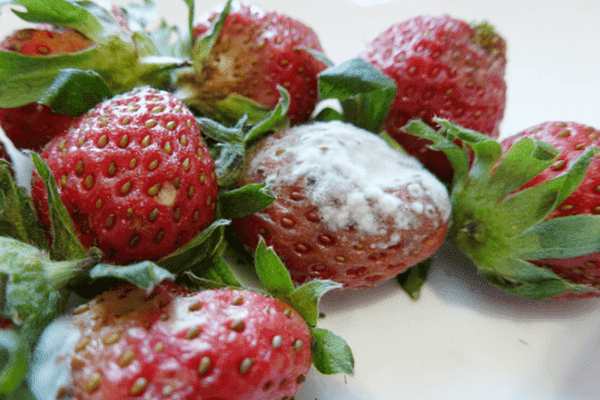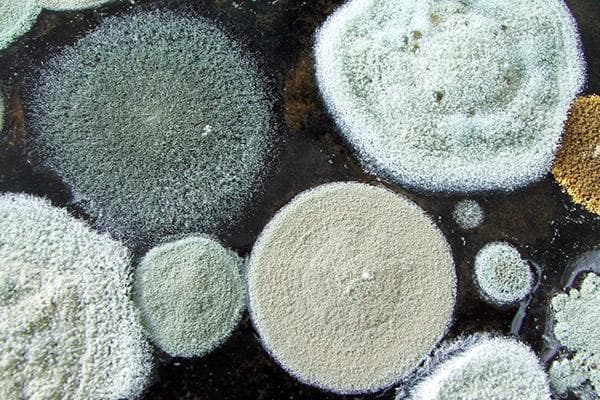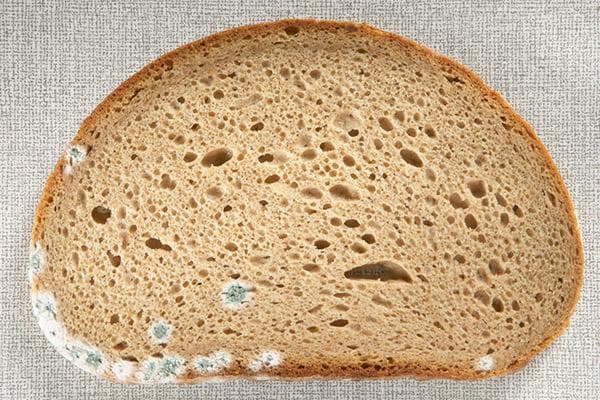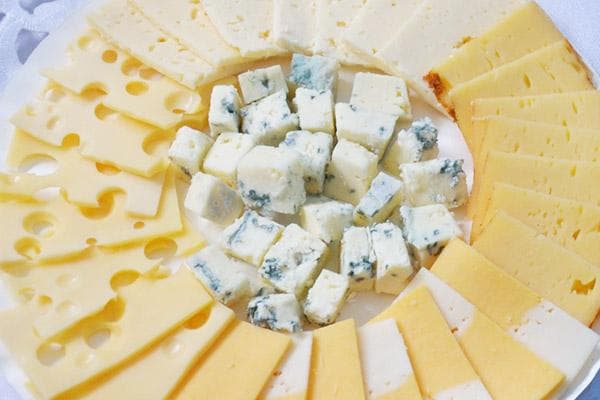Is mold on food dangerous and what are the dangers of such food?
Before you had time to buy bread or cheese, it had already “bloomed” - this situation is familiar to many. A number of questions immediately arise: is it worth eating and why is mold on food dangerous? In some cases, the damaged part can be cut off, but in others, you have to throw everything away so as not to put your health at serious risk.

Features of food contamination
Mold consists not only of the visible part - its mycelium spreads very deeply, affecting the entire product. The more moisture and the more porous the structure, the easier and faster food spoilage occurs. Fungi form millions of spores, infecting everything around them. It is important to understand that removing the bad film from the surface of the jam will not help the matter, nor will boiling it. The toxins will still remain almost unchanged - you shouldn’t give such sweetness to children, and it’s better not to eat it yourself.
The danger comes from dairy products and meat from animals that have been constantly fed low-quality food contaminated with fungi. Toxins enter the milk and accumulate in the fat layer - heat treatment, fermentation and salting with smoking practically do not destroy dangerous substances.
Types of mold
There are many types of molds, and not all of them are dangerous to humans.
The following species most often appear on food products:
- White mold. It is formed by the genus Mukorov - lower mold fungi.Colonies often appear on bread, root vegetables exposed to soil, and glucose-rich foods such as grapes and other sweet fruits. It has a grayish-beige tint. Not all species are dangerous; some are used in the production of fermentation products (tofu, tempeh) and in the production of ethyl alcohol from potatoes.
- Black mold. Most often this is a colony of Aspergillus black - one of the most dangerous representatives of the genus. At first it looks like pure white fluff, reminiscent of padding polyester fibers, then quickly turns black. It grows on bread and wet foods, and often settles on the walls of damp rooms. It is better to throw away foods affected by “black scab” immediately before they contaminate the rest of the food.
- Green mold. A well-known representative of the Penicillium genus, which loves to spoil bread, jam and dairy products. Less dangerous than Aspergillus, but can cause side effects and a specific disease if contaminated food is systematically consumed. The species Penicillium camemberti is used in the production of Camembert cheese and its colony is white in color.
- Blue or noble mold. It is harmless to humans and even useful - it improves digestion and improves immunity. Strains of Penicillium roqueforti and Penicillium glaucum are used in the production of blue cheeses: Roquefort, Danablu and other varieties.
- Pink mold. Formed by colonies of fungi from the genus Fusarium. Most often it spoils grains and cereals. Poses a danger to human health, causing septic sore throat. Products affected by this species are absolutely unusable and must be destroyed.
- Gray mold. Botrytis gray is another dangerous species. Found everywhere, but thrives best in humid, warm climates.It lives on any plant products, especially those rich in glucose, and causes gray mold disease, poisoning the plant with its toxins. Some species are classified as noble rot and are often used in wine production.
What happens if you eat something with mold?
Molds produce mycotoxins that can cause serious health problems.
The most common consequences:
- Gastrointestinal disorder. It manifests itself as symptoms of classic food poisoning: intense abdominal pain, diarrhea, and in severe cases, nausea and vomiting.
- Allergy. Often found in children and adults prone to such reactions. It can manifest itself as intense itching, skin rashes and exacerbation of various chronic diseases - dermatitis, psoriasis, bronchial asthma.
- Toxic organ damage. If you regularly consume moldy foods, your kidneys and liver may be damaged. The patient feels weakness, nausea, loss of appetite, pain and discomfort in the right hypochondrium. If the kidneys are damaged, swelling and electrolyte imbalance in the body may occur. Headaches, fatigue and decreased immunity often occur - frequent colds, infections, furunculosis. Some species cause sore throat, pharyngitis and mycotic dermatitis associated with fungal parasitism on the skin.
There are specific diseases caused by a certain species - aspergillosis, penicillosis, mucormycosis and others. They arise from frequent contact with mold and are not always easy to treat.
To eat or not to eat - that is the question
Whether or not to consume moldy foods is up to everyone to decide for themselves, but it is best to avoid such “delicacies” for the sake of your health.If it’s a pity to throw away food, you can try to minimize the danger using several rules.
Not everything moldy can be eaten. All spoiled food can be divided into two categories.
- Throw it away immediately and without talking
Hazardous foods include all meat products, including cooked products. Boiled sausages, smoked meats, corned beef with mold go there - in the trash. All dairy products, except hard cheeses, are to be thrown away. Fish and all its derivatives too - mercilessly. She will be kept company by spoiled soft vegetables and fruits: tomatoes, cucumbers, apricots, peaches. Bakery products and cereals affected by mold are also completely unsuitable for food. Moldy peanut butter and nuts are especially dangerous - they harbor the most toxic types of fungi. Spoiled canned food is also dangerous to consume, as it is fraught with botulism.
In general, all soft foods with a high water content that cannot resist a colony of mold fungi are thrown into the trash. This is due to the high penetrating ability of the mycelium and concomitant bacterial contamination of products - you can easily catch an intestinal infection or a more dangerous disease.
- Can be used with restrictions
This category includes solid products that do not have a porous structure. These are some vegetables: carrots, beets, cabbage, bell peppers. Hard cheeses - if mold has appeared on the crust and has not penetrated into the pores. In these cases, it is enough to cut off the affected part, capturing a centimeter layer, and thoroughly wash the knife so as not to spread the spores throughout the product. The cheese is wrapped in new parchment; it is advisable to use the vegetables immediately or transfer them to a clean bag.
Important note: it is not advisable to eat spoiled apples.They are often affected by gray mold, which spreads toxins deep into the fruit pulp.
How to protect food from mold?
To avoid the dangers of food spoilage, you should store it properly and pay attention to hygiene.
Following simple rules will reduce the risk of mold:
- Store breads and cereals in dry and well-ventilated places. If your home is damp, put a bag of coarse salt or a special food desiccant in the bread bin.
- Vegetables and root vegetables must be thoroughly washed and dried before storing them.
- Store dairy, meat and fish products only in the refrigerator, using clean containers and packaging.
- Storage areas should be washed regularly with a soda solution, crumbs and dried crusts should be removed from the bread bin.
And the most important thing is to prepare and buy food in the quantities needed. Leftover porridge and pasta left in the refrigerator can become a favorable environment for the development of mold. Take care of your health!



